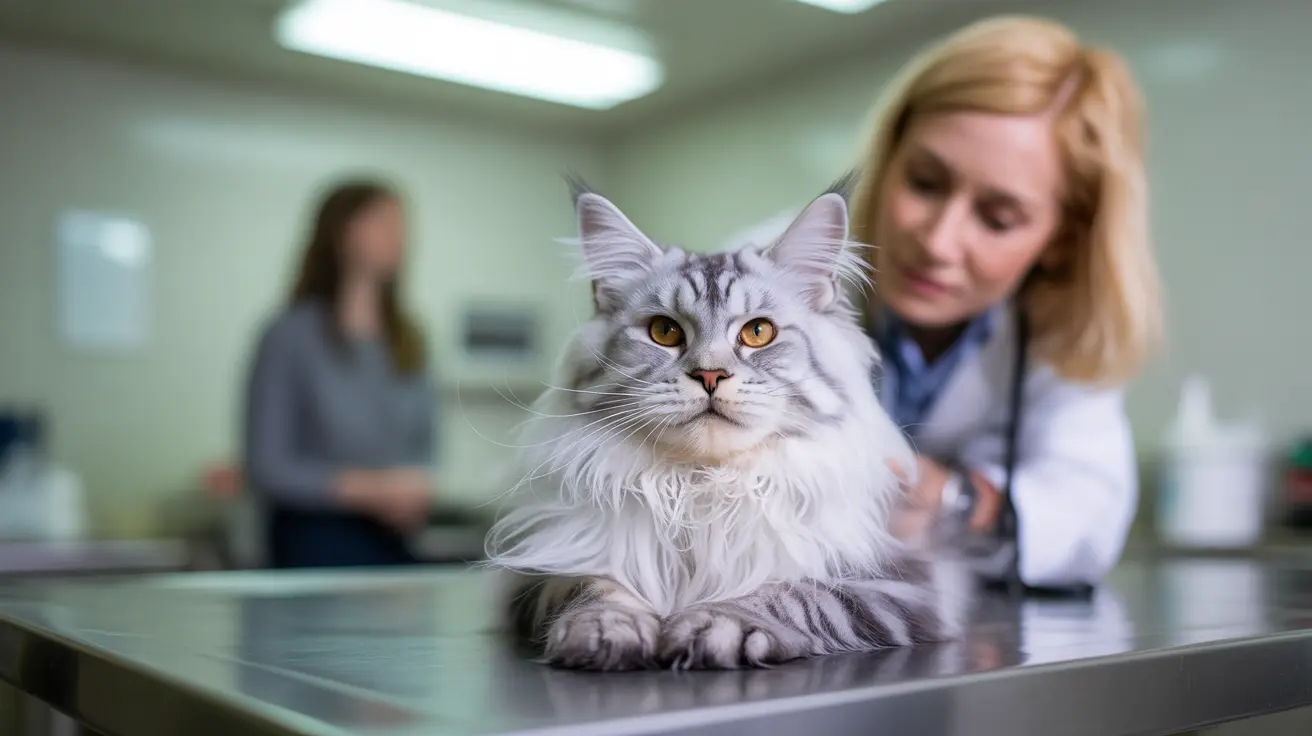Understanding safe temperature ranges for cats is crucial for every pet owner, as these beloved companions can be particularly vulnerable to temperature extremes. While cats are adaptable creatures, they can quickly become distressed when exposed to temperatures outside their comfort zone, leading to potentially life-threatening situations.
In this comprehensive guide, we'll explore the specific temperature ranges that pose risks to cats, recognize the warning signs of temperature-related stress, and learn how to protect our feline friends from dangerous weather conditions.
Understanding Your Cat's Temperature Regulation
Cats maintain a normal body temperature between 99.5°F and 102.5°F (37.5°C to 39.2°C). Unlike humans, cats have limited cooling mechanisms, primarily relying on grooming and finding cool surfaces to regulate their body temperature. They only have sweat glands in their paw pads, making them particularly susceptible to overheating.
High-Temperature Dangers
Temperatures above 85°F (29.4°C) can become uncomfortable for cats, with serious risk developing as the mercury rises above 90°F (32.2°C). At these temperatures, cats may experience:
- Rapid breathing and panting
- Lethargy and weakness
- Drooling
- Vomiting
- Red or darkened gums
When a cat's body temperature exceeds 104°F (40°C), they enter the danger zone for heatstroke, which can be fatal if not treated immediately.
Cold Weather Risks
While cats are generally more cold-tolerant than heat-tolerant, temperatures below 45°F (7.2°C) can be dangerous, especially for:
- Senior cats
- Kittens
- Cats with health conditions
- Short-haired breeds
Extended exposure to freezing temperatures can lead to hypothermia and frostbite, particularly affecting ears, tail, and paw pads.
Creating Safe Indoor Environments
The ideal indoor temperature range for cats is between 65-75°F (18-24°C). To maintain a safe environment:
- Keep indoor temperatures consistent
- Provide warm, elevated sleeping spots
- Ensure access to fresh water
- Create sunny resting areas
- Maintain proper humidity levels (around 40%)
Special Considerations for Different Cat Types
Certain cats require extra attention during temperature extremes:
- Brachycephalic (flat-faced) breeds are more susceptible to heat stress
- Elderly cats may have difficulty regulating body temperature
- Overweight cats are at higher risk for overheating
- Outdoor cats need additional monitoring during extreme weather
Frequently Asked Questions
What outdoor temperature ranges are considered dangerous for cats, and when should I bring my cat indoors?
Outdoor temperatures above 85°F (29.4°C) or below 45°F (7.2°C) are potentially dangerous for cats. Bring your cat indoors when temperatures approach these thresholds, especially if high humidity or wind chill is present.
How can I recognize signs of heatstroke or hypothermia in my outdoor cat?
Signs of heatstroke include excessive panting, drooling, lethargy, vomiting, and bright red gums. Hypothermia symptoms include shivering, weakness, shallow breathing, and cold extremities. Both conditions require immediate veterinary attention.
What precautions can I take to protect my outdoor cat from extreme temperatures?
Provide multiple water sources, create shaded areas, ensure access to indoor spaces, and consider a temperature-monitored outdoor cat shelter. During extreme weather, keep cats indoors entirely.
How does a cat's normal body temperature compare to dangerous environmental temperatures?
A cat's normal body temperature (99.5-102.5°F) can be maintained when environmental temperatures remain between 45-85°F. Temperatures outside this range make it difficult for cats to regulate their body temperature effectively.
Why are certain cats, like seniors or flat-faced breeds, more vulnerable to temperature extremes?
Senior cats often have weakened temperature regulation abilities due to age-related health issues. Flat-faced breeds have compromised breathing passages that make cooling more difficult. These cats need extra monitoring and protection during temperature extremes.
Conclusion
Understanding what temperature is dangerous for cats is essential for keeping our feline companions safe and healthy. By monitoring environmental conditions and taking appropriate precautions, we can protect our cats from temperature-related health risks and ensure their comfort year-round.






